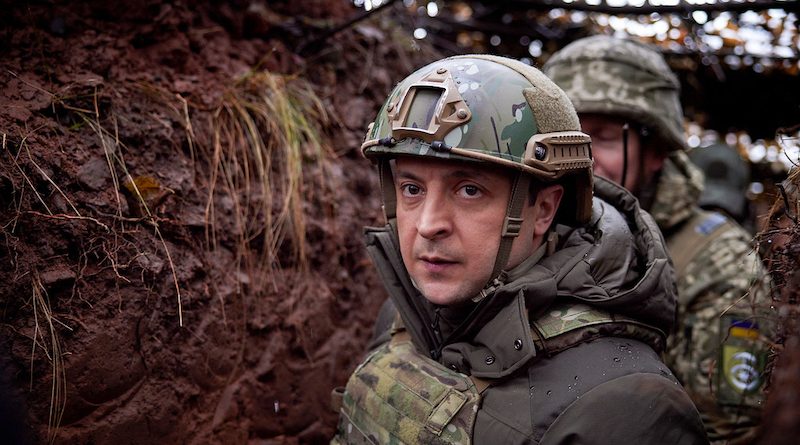To know how the war in Ukraine will end, watch Zelensky, not Putin
By Tara Sonenshine, Professor of Practice of Public Diplomacy at the Fletcher School of Law and Diplomacy at Tufts University
If you are tired of reading about Russia’s war in Ukraine, give yourself a short break and prepare for a long winter of discontent. While pundits and planners are busy gaming out the inevitable question, “How does it end?” cynics and realists are coming to terms with the fact that unless the Russian people say “enough,” or until the Ukrainians win back their entire country, this bloody mess will continue.
So, what should you know for October — a critical month for this war?
Russia and NATO will separately hold annual military exercises in the next few weeks, a dangerous moment when the war is escalating. In the last few days, the shelling of cities by Russian kamikaze drone strikes has increased, killing civilians and damaging Ukraine’s energy infrastructure.
“Steadfast Noon,” which starts this week, will involve more than 60 U.S. and European aircraft rehearsing nuclear war. Although there will be no live nuclear weapons in the simulation, 14 nations will be engaged in an exercise with fighter jets capable of carrying nuclear warheads. That means our troops are practicing how tactical nuclear fighter wings in Europe prepare to deliver things like U.S. nuclear gravity bombs. That should make you sit up straight in your chair.
Russia will be watching these exercises from 625 miles away while getting ready for its own annual military exercises later in the month. They will conduct, “Grom” which means “thunder.” The Russian exercise will include live missile launches and tests of ballistic missile systems.
While the skies will be busy hosting military exercises, the ground in Ukraine will continue to shake with explosions from Russian missiles and troops exchanging gunfire as frightened citizens seek cover.
Meanwhile, the ground in Moscow is also getting shaky as Russian authorities round up ordinary citizens to serve in a war they know little about. According to new reporting by the Washington Post, Russian police and military officials are going door to door searching for men of fighting age and sending them to recruitment centers. In cities and towns across Russia, people are going into hiding to avoid capture by their own government.
Much of the war is coming down to three things: military endurance, information and money. Russia’s military prowess appears to be waning, according to intelligence experts. And some of that is tied to international sanctions that are starting to bite.
On the aid side, the U.S. is sending Ukraine another military package, worth $725 million, including missiles, anti-tank weapons, ammunitions and medical supplies. In total, the U.S. has committed to more than $18.2 billion in military aid to Ukraine since January 2021.
The question remains how public support in the West will evolve over the next month.
Americans may express support or opposition to that assistance when they head to the ballot box in November to vote in the midterm elections.
Similarly, Europeans are beginning to question the price tag for assistance as the European Union prepares to announce about a half billion more euros of aid to buy weapons for Ukraine and help build a comprehensive military training mission in Europe. According to some public opinion polls, Europeans are most worried about the rising cost of energy.
Finally, a key determinant in when and how this war ends is information. On the Russian side, military hawks are taking to the airwaves to push a hard line using pro-war Telegram channels to urge patience and push Russian President Vladimir Putin to strike harder.
Journalists who dare to speak out against the war from inside Russia are being detained. In one case, Russian television journalist Marina Ovsyannikova, who protested the invasion of Ukraine in a live broadcast, fled the county after escaping house arrest.
On the Ukrainian side, President Volodymyr Zelensky continues to wage a full-scale media campaign using social media to show Russian military setbacks and losses.
This piece is republished from The Hill.

